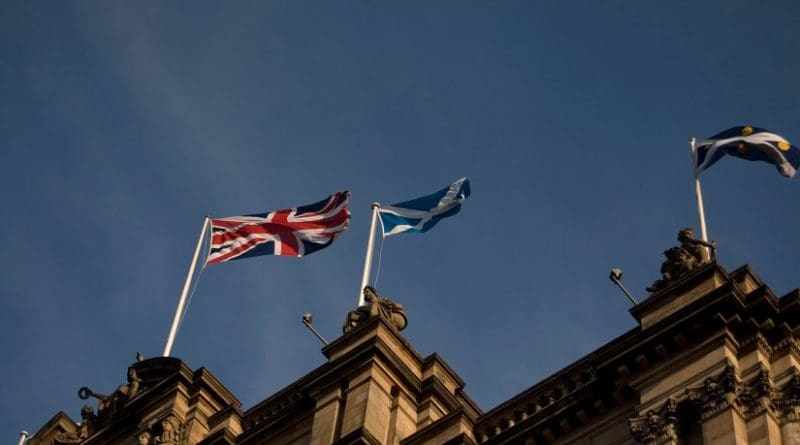Scotland Seeks Second Referendum On Brexit Doubts
By EurActiv
(EurActiv) — The Scottish government announced today (13 March) a new independence vote, pre-empting this week’s expected start of the Brexit process. Nicola Sturgeon will seek the power to call a new referendum on whether Scotland should follow the UK out of the EU or form its own country.
Prime Minister Theresa May could announce as early as tomorrow (14 March) that she is triggering the Article 50 process of withdrawing from the European Union, putting Britain on course to leave by March 2019 after four decades of membership.
Scottish First Minister Nicola Sturgeon has long warned that largely pro-European Scotland would not accept a damaging break with the EU and today (13 March) she made good on her threat.
“I will now take the steps necessary to make sure that Scotland will have a choice at the end of this process,” she said at a hastily convened press conference in Edinburgh.
This would be “a choice of whether to follow the UK to a hard Brexit or to become an independent country, able to secure a real partnership of equals with the rest of the UK and our own relationship with Europe”, she said.
The Scottish National Party (SNP) leader said she would next week begin seeking authority for a vote between autumn 2018 and early 2019, before Britain leaves the EU.
May’s government has repeatedly made clear it does not believe there should be another vote after a first Scottish referendum in 2014 in which a majority voted against independence, and she has the power to block Sturgeon’s request.
“Another referendum would be divisive and cause huge economic uncertainty at the worst possible time,” a Downing Street spokesman said.
But rejecting Sturgeon’s request would likely only energise the Scottish nationalists’ cause and is a major headache for May as she enters Brexit negotiations with the other 27 EU member states.
Sturgeon’s announcement came just hours before legislation empowering May to trigger Article 50 of the EU’s Lisbon Treaty returns to parliament for its final stages.
After heated debate and a delay in the upper House of Lords, the bill could win final approval by both houses by this evening.
It could be signed into law by Queen Elizabeth II as early as Tuesday, leaving May’s path clear to begin Brexit whenever she wants.
‘Firmly on track’
May has promised to trigger Article 50 by the end of March, a timetable her spokesman said today the government was “firmly on track to achieve”.
At a summit in Brussels last week, the prime minister said: “Our European partners have made clear to me that they want to get on with the negotiations, and so do I.”
Once May has notified the EU of her decision by letter, the other 27 EU leaders will take just 48 hours to issue their first draft proposal for the negotiations.
But talks are not expected to begin for months as both sides finalise strategies for two years of mammoth negotiations.
EU leaders have planned a follow-up meeting on April 6, “provided that the prime minister moves Article 50, I think by March 15th”, Irish PM Enda Kenny said.
Article 50 provides only two years for Britain to unravel four decades of membership and forged new trade ties when it leaves the single European market.
EU leaders are determined that Brexit will not undermine the unity of the bloc, and that the final terms do not encourage other member states to follow Britain and jump ship.
Britain’s opposition Labour Party is braced for May to trigger Article 50 on Wednesday or Thursday (15 or 16 March) but Sturgeon said she had no idea when it would happen, proof, she said, that Scotland was being sidelined.
A BMG survey for Scottish newspaper The Herald found that 56% were opposed to a new independence referendum before Brexit, and 52% said they were against Scotland seceding from the UK.

